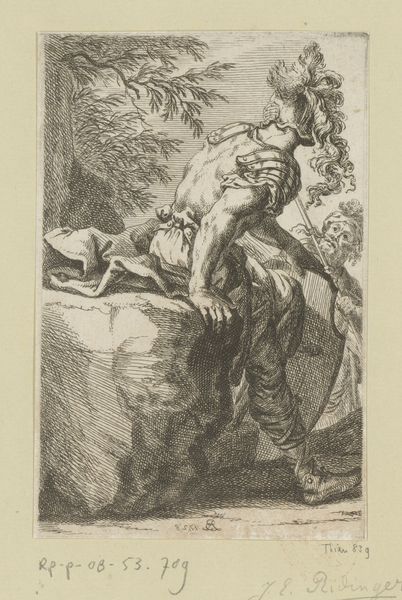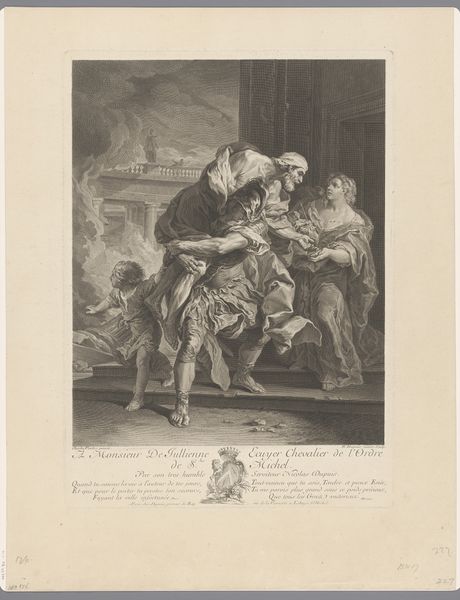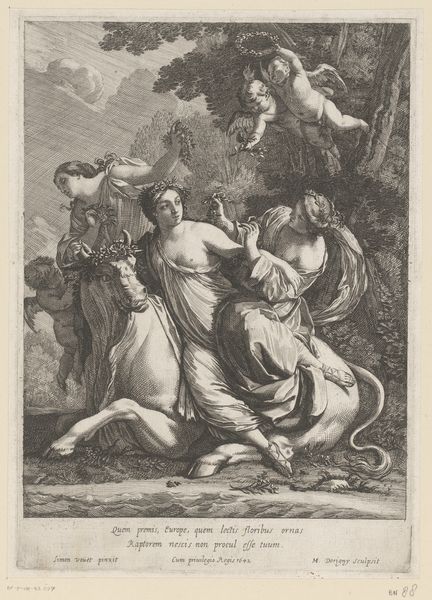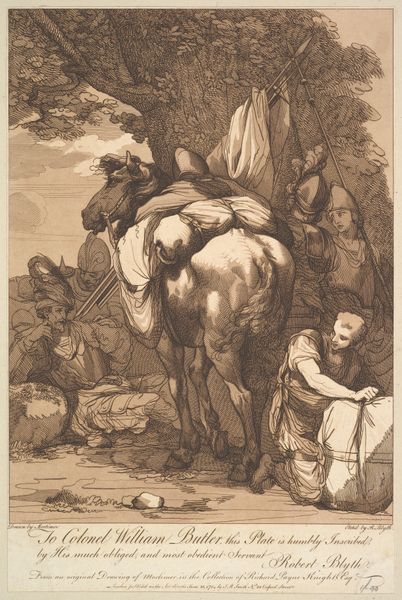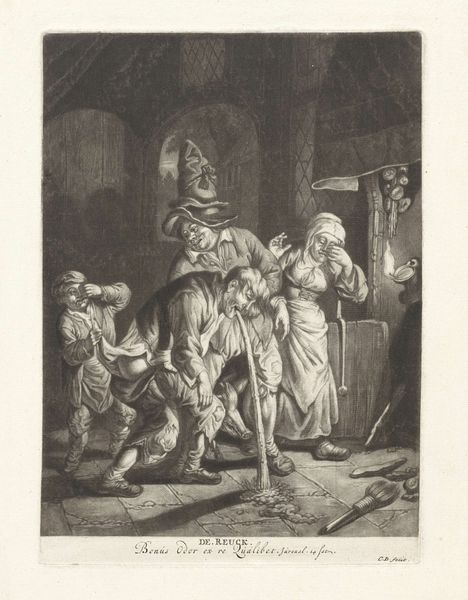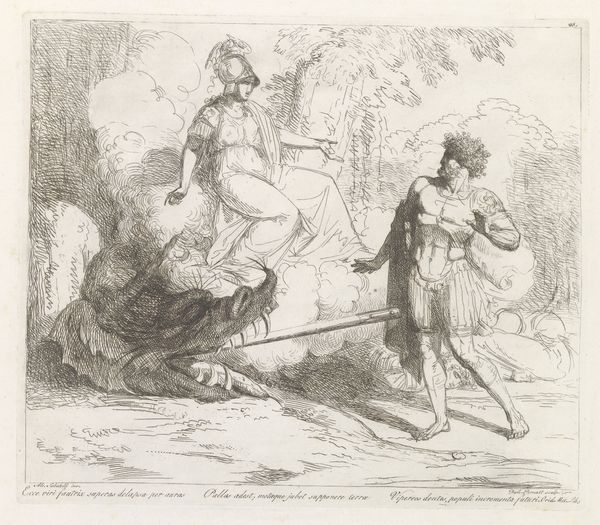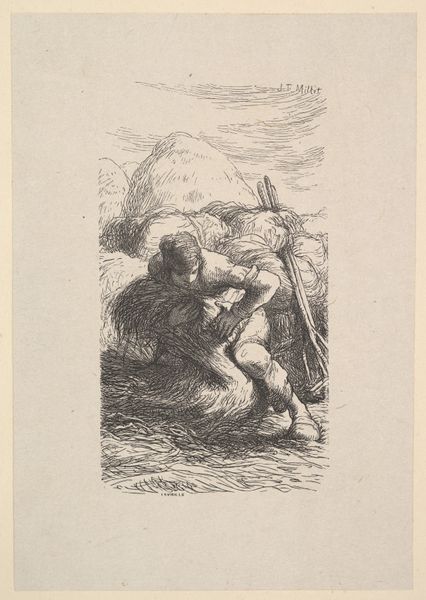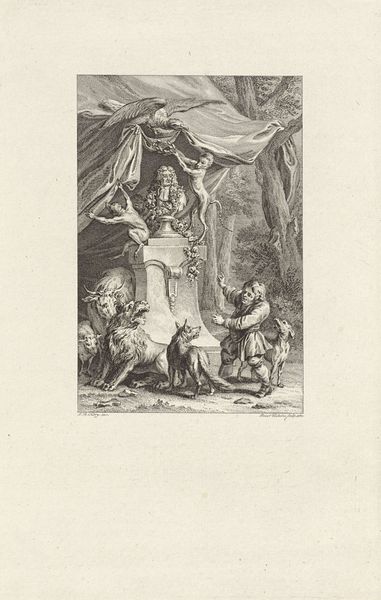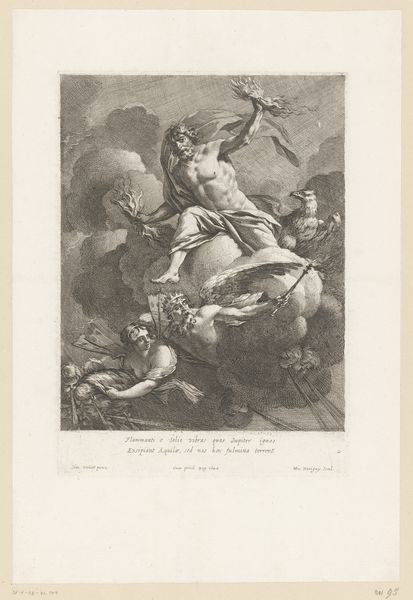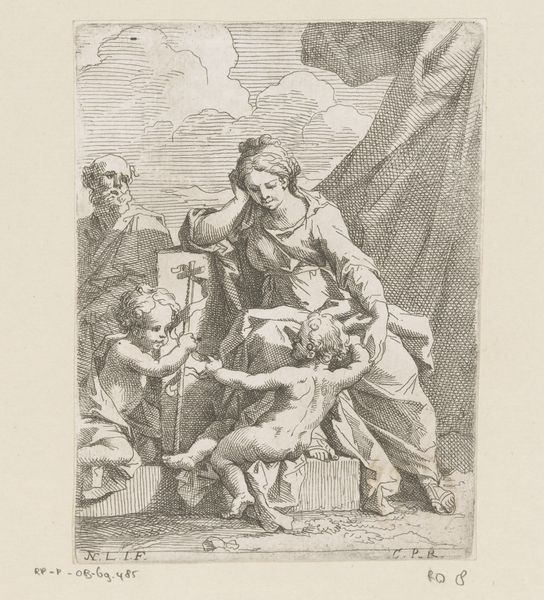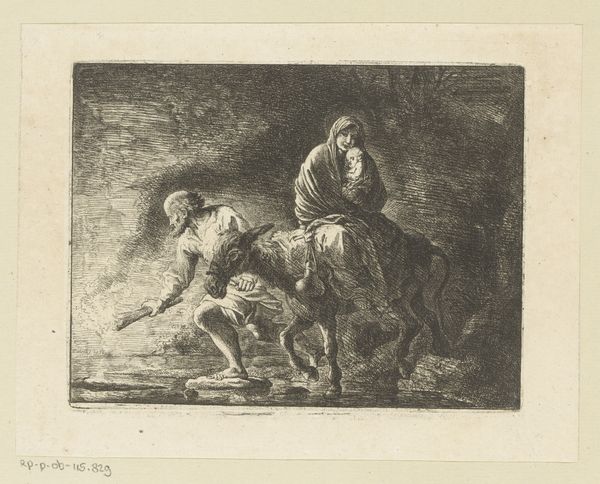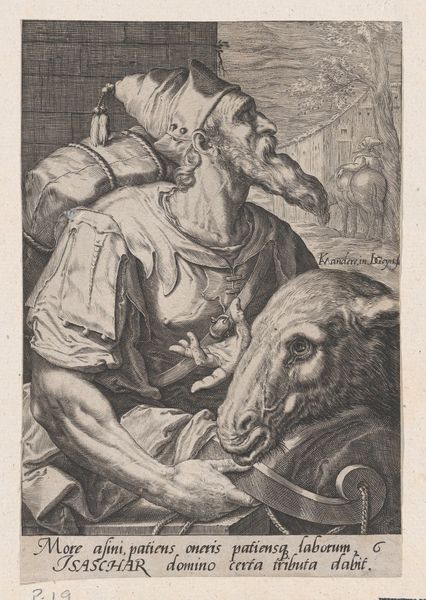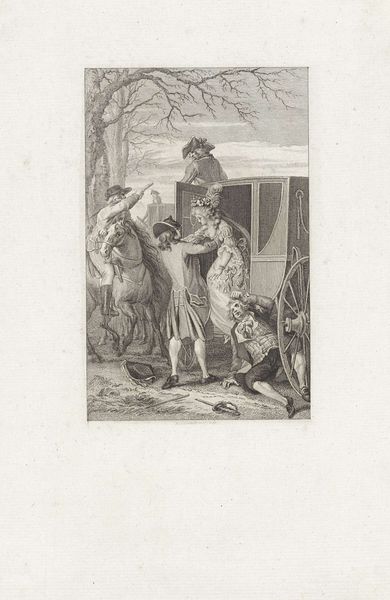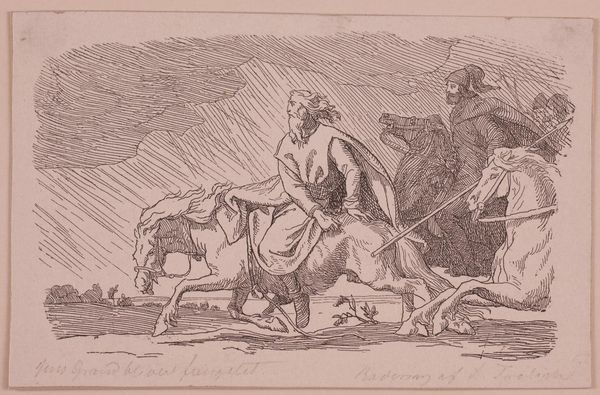
Dimensions: Image: 10 1/16 x 6 15/16 in. (25.6 x 17.6 cm) Sheet: 17 3/16 x 11 5/16 in. (43.6 x 28.8 cm)
Copyright: Public Domain
Curator: We’re looking at "The Good Samaritan," a print made by Jules Laurens in 1857, currently residing at the Metropolitan Museum of Art. Editor: My first thought is how dramatically the artist captured the weight of that man carrying the injured figure. It looks strenuous, even desperate. You can practically feel the strain in his back. Curator: Laurens truly conveys a sense of narrative, doesn't he? He was part of the Romantic movement, which, of course, embraced heightened emotions and powerful storytelling, and you can see that play out here. The Good Samaritan is, after all, an iconic biblical tale—a story of unexpected kindness and empathy. Notice the way he renders the landscape, too; it's almost allegorical. The path seems treacherous. Editor: It’s also fascinating to consider this as a print. Given its scale and level of detail, I’m curious about the labor involved. The romantic sentiment contrasts with the quite physical production involved in creating these marks on paper, multiplying it for wider circulation. Curator: Precisely! Prints enabled broader access to art and ideas. This image would have resonated deeply within a society grappling with its own moral compass and the value of humanitarian action. It is less about individual heroism, maybe, and more about accessible benevolence. Editor: You raise a really compelling point about accessibility. This rendering translates a complex moral framework—or, at the very least, aims to make it universally understandable and emotionally palpable. It also speaks volumes that such images and values are enshrined in institutions, these museums. The very materiality of the print allows that continuity. Curator: I agree, the medium absolutely reinforces the message. It reminds us how art, even in its reproducible forms, can activate profound moral sentiments and enduring social memories. Editor: I'm left thinking about the unseen labor involved in creating this romanticized vision of charity, and how art itself, and acts of art-making, might be seen as a sort of "good Samaritan" act within a larger social context.
Comments
No comments
Be the first to comment and join the conversation on the ultimate creative platform.
